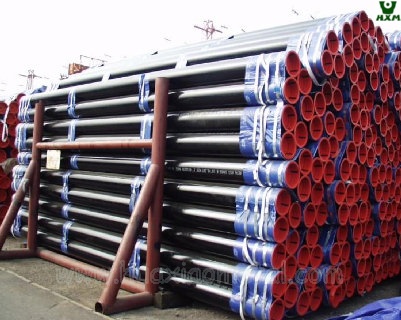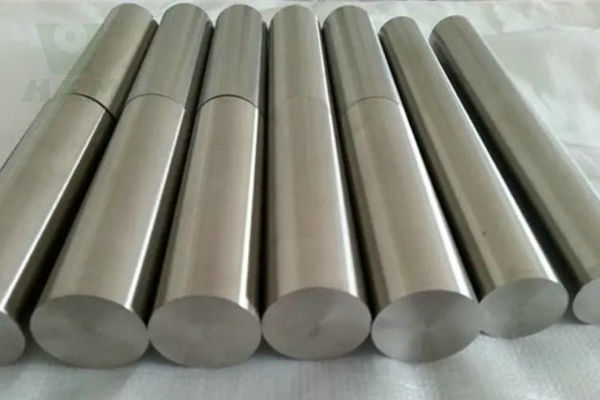When it comes to metal material selection, the terms “Mild Steel” and “Carbon Steel” are often mentioned. Although they may seem similar, there are significant differences between them. Understanding these differences not only helps with the correct selection of materials to suit specific engineering needs but also helps ensure optimal performance and durability. This article will explore the definitions, differences, and their respective application fields, mechanical properties, etc. Mild Steel vs Carbon Steel so that readers can better understand their unique features.
What is Mild Steel?
Mild steel is a type of carbon steel with a low amount of carbon content, generally ranging from 0.05% to 0.25%. This steel type is often referred to as low carbon steel. It is one of the most commonly used types of steel due to its relatively low price and wide availability. Mild steel is known for its malleability, ductility, and relatively low tensile strength, making it easy to work with and shape. It is often used in various applications where its formability and versatility are essential, such as in the manufacturing of pipelines, automotive parts, construction materials, and machinery components.
Mild steel is often favored for its weldability, allowing it to be easily welded into different shapes and structures without the risk of brittleness or other welding complications. It can be further strengthened through various heat treatment processes or by adding other elements such as manganese. While mild steel may not possess the same level of hardness and strength as some other types of steel, its cost-effectiveness and ease of use make it a popular choice for a wide range of applications where high strength is not the primary requirement.
What is Carbon Steel?
Carbon steel is a broad term used to describe a range of steel compositions that primarily contain carbon as the main alloying element. Carbon steel typically includes a carbon content ranging from 0.05% to 2.0%, although it can sometimes go beyond this range. This type of steel is widely utilized in various industries due to its versatility, affordability, and the ability to be easily tailored to specific applications through heat treatment and other processes.
It is commonly used in the production of structural components, machinery parts, tools, and various industrial equipment. However, it is important to note that carbon steel may be more prone to corrosion compared to some other types of steel, and its susceptibility to rust can be mitigated through the use of protective coatings or appropriate maintenance procedures.
Carbon Steel Types
Carbon steel can be further categorized into several subtypes based on its carbon content and other alloying elements. Some common types of carbon steel include low carbon steel, medium carbon steel, and high carbon steel. The varying carbon content impacts the steel’s properties, such as hardness, strength, and ductility.
Low Carbon Steel
Low carbon steel typically has a carbon content between 0.05% and 0.25%. It has good plasticity and toughness and is easy to process and weld. This steel is commonly used in applications that require ease of workability and cost-effectiveness, such as automotive parts, metal structures, and household appliances.
Medium Carbon Steel
The carbon content of medium carbon steel ranges from 0.25% to 0.60%. It is stronger and harder than mild steel but still retains a certain degree of malleability and weldability. Medium carbon steel is commonly used to make machine parts, bearings and components used in vehicle structures.
High Carbon Steel
High carbon steel typically has a carbon content between 0.60% and 2.0%. It has excellent hardness and strength, but is relatively brittle. High carbon steel is often used in applications that require extremely high strength and wear resistance, such as knives, springs and machine parts.
Mild Steel vs Carbon Steel: What is the Difference?
Mild steel and carbon steel are often compared, but they have distinct differences that make them suitable for different applications. Here’s a breakdown of the key differences between the two:
Carbon Content: The main distinction lies in the carbon content. Mild steel has a low carbon content, generally around 0.05% to 0.25%, while carbon steel is a broad term that includes steel with a carbon content ranging from 0.05% to 2.0%. This difference in carbon content affects their properties and applications.
Strength and Hardness: Carbon steel, particularly high carbon steel, tends to be stronger and harder than mild steel. Mild steel, with its lower carbon content, is softer and more ductile, making it easier to work with and shape.
Uses: Mild steel is commonly used in construction, automotive manufacturing, and general engineering due to its malleability and ease of fabrication. On the other hand, carbon steel, with its higher carbon content and subsequent higher strength and hardness, is suitable for applications that require robustness, such as tools, machinery parts, and structural components.
Weldability: Mild steel is generally more weldable compared to high-carbon steels due to its lower carbon content, which results in less brittleness during the welding process.
Cost: Mild steel is typically more cost-effective than high-carbon steel because of its lower carbon content and simpler production process.
Understanding these differences is crucial when selecting the appropriate steel type for a particular application, considering factors such as strength, ductility, cost, and weldability. Both mild steel and carbon steel have their own advantages and are suitable for different industrial and commercial uses.
Is Carbon Steel better than Mild Steel?
Whether carbon steel is better than mild steel depends on the specific requirements of the application. Each type has its own advantages and is suitable for different purposes.
In Conclusion:
Engineering requirements, strength, cost, and ease of processing need to be considered when selecting the appropriate metal material. Despite the differences between “Mild Steel vs Carbon Steel”, they both play an important role in their respective fields. For applications requiring higher strength and wear resistance, “Carbon Steel” is an ideal choice, while for applications requiring ease of workability and cost-effectiveness, “Mild Steel” is more suitable. Choosing the right steel type helps ensure a successful engineering project and improves the performance and reliability of the final product.







